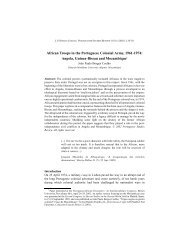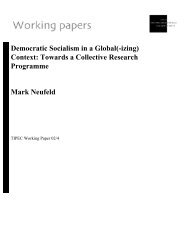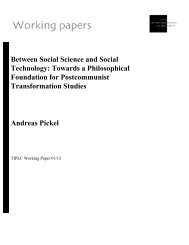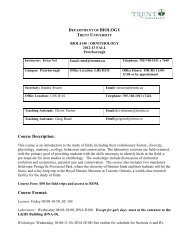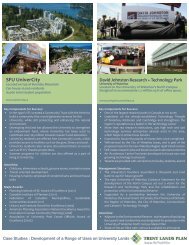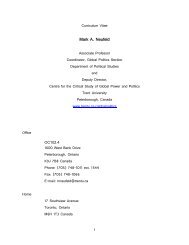AUTHOR COPY - Trent University
AUTHOR COPY - Trent University
AUTHOR COPY - Trent University
You also want an ePaper? Increase the reach of your titles
YUMPU automatically turns print PDFs into web optimized ePapers that Google loves.
Conceptualizing holism in international interdisciplinary critical perspective<br />
The New Physics<br />
Connected to systems science, some physicists also make connections between<br />
their work and holistic thought-forms. Notable physicists such as David Bohm<br />
and Fritjof Capra emphasize the similarities between their theories of the indistinguishability<br />
of field and force and mind and matter, with the spiritual traditions<br />
of Buddhism, Confucianism, Hinduism and Taoism. Over the past 2000<br />
years or more, Buddhists have developed sophisticated philosophical, phenomenological<br />
and epistemological ideas, and they have found a very practical<br />
way to apply them (Lopez, 2008). Some Western scientists, such as those who<br />
study the mind, have been profoundly influenced by Buddhist thought and<br />
have worked to establish empirical correlations between Buddhist practice and<br />
scientific work (Lopez, 2008; Weaver et al, 2008). Western tradition has avoided<br />
the idea of a selfless self, of a virtual self. This egolessness, or selflessness, is at<br />
the very core of Buddhism.<br />
Capra (2002) also extends the framework of systems and complexity theory to<br />
the social domain, akin to the foundational principles of holism. He uses this extended<br />
framework to discuss some of the critical issues of our time – the management<br />
of human organizations, the challenges and dangers of economic globalization,<br />
the scientific and ethical problems of biotechnology, and the establishment of ecologically<br />
sustainable communities and technologies (Capra, 2002).<br />
Bohm conceptualizes an implicate order to the universe composed of frequencies<br />
beyond time and space that has been hidden from people. His paradigm is<br />
a form of ontological holism. In this conception of order, primacy is given to the<br />
undivided whole, and the implicate order inherent within the whole, rather than<br />
to parts of the whole (Healey, 2009).<br />
These scientists emphasize in their work the same notions as holism; the<br />
whole is greater than the sum of its parts. The natural world interacts synergistically.<br />
It is thus not possible to fully understand systems by knowing the<br />
properties of their individual components – although it is useful to study individual<br />
components. Indeed, as stated by Capra,‘the basic oneness of the universe<br />
is not only the central characteristic of the mystical experience but it is also<br />
one of the most important revelations of modern physics. It becomes apparent<br />
at the atomic level and manifests itself more and more as one penetrates deeper<br />
into matter, down into the realm of subatomic particles’ (Gaan, 2005, p. 324).<br />
The observer of a scientific experiment, according to quantum theory, can<br />
change the outcome of an experiment, simply by observing, for the observer<br />
puts energy into the system and this energy has an impact on that, which is<br />
being observed. Just as Buddhist and Hindu philosophy stress, the observer<br />
and observed are seen as connected, as are mind and matter, field and force.<br />
As Gary Zukav explains, quantum theory sees everything in the universe as<br />
<strong>AUTHOR</strong> <strong>COPY</strong><br />
r 2011 Macmillan Publishers Ltd. 1477-8211 Social Theory & Health Vol. 9, 3, 244–255<br />
247




